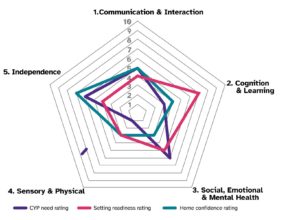What is the Somerset Inclusion Tool?
This is a tool that is used to:
- help all schools and settings to ensure they are ready to meet SEND needs and to help Inclusion Services to better target and tailor support to schools and settings
- help schools and settings to explore children and young people’s emerging needs early and access the right support at the right time
- help strengthen conversations between professionals and families about their children and young people’s needs and the support in place for them
- better monitor children and young people’s changing needs and progress and ensure we are being ambitious about their futures
How does the Somerset Inclusion Tool (SIT) work with the Somerset Graduated Response Tool (SGRT)?
The Somerset Inclusion Tool is the first step to reflect on the whole school’s strategic SEND and initial pupil profiling.
It is expected that all schools and settings will use the tool to reflect on and develop their setting readiness to meet needs and to support the early identification of individual pupil needs.
The second step for schools as part of their graduated response is to complete the SIT pupil profile and fully embed the Somerset Graduated Response Tool. This will support the implementation of high-quality provision as a response to emerging needs.
Setting readiness
- Setting Leadership activity
- Review provisions, ways of working and other factors outlined in the Somerset Inclusion Tool and select the ‘score’ that is the best fit for your setting
Child’s needs
- Practitioner/key adult/ SENCO reviews descriptors of needs and selects all of those that apply
- Parents should be engaged
Home confidence
- Collaborative conversation with setting and family
- Family to share confidence in supporting educational outcomes
- Purpose of sharing insights, not to judge


